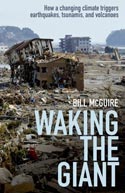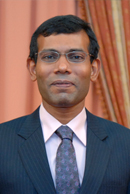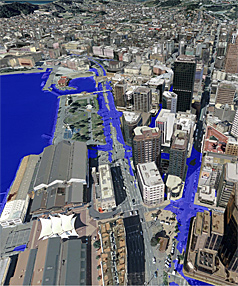 It’s only if we fail to grasp the enormity of the threatened impacts of climate change on the global environment that we can scoff at the notion that even volcanic eruptions and earthquakes may be triggered as a consequence of our continuing to burn fossil fuels. Not that it’s an easy consequence to appreciate, but vulcanologist Bill McGuire’s latest book Waking the Giant: How a Changing Climate Triggers Earthquakes, Tsunamis, and Volcanoes explains it with patient clarity. His book is a fascinating read in its discussion of the past and an alarming one in its analysis of future likelihoods.
It’s only if we fail to grasp the enormity of the threatened impacts of climate change on the global environment that we can scoff at the notion that even volcanic eruptions and earthquakes may be triggered as a consequence of our continuing to burn fossil fuels. Not that it’s an easy consequence to appreciate, but vulcanologist Bill McGuire’s latest book Waking the Giant: How a Changing Climate Triggers Earthquakes, Tsunamis, and Volcanoes explains it with patient clarity. His book is a fascinating read in its discussion of the past and an alarming one in its analysis of future likelihoods.
The book begins with a straightforward and sobering view of the catastrophe which looms if we continue to fail to act on emissions. The signs of climate change are everywhere apparent and the prospects for the future are bleak. McGuire acknowledges the difficulties of precise prediction of what that future might hold 50 or 100 years from now and suggests that looking back on the past may be the best way to gauge what lies ahead. The main focus of his book is on ways in which Earth’s crust has responded to dramatically changing climates, but he also considers, further back, times of high levels of atmospheric carbon dioxide as possible pointers to what today’s increased greenhouse gases might forebode.

 An interesting
An interesting  In the last episode of the
In the last episode of the  The Guardian’s environmental editor John Vidal is a journalist who takes opportunities to report the adverse effects of climate change already being experienced by some of the world’s poorer populations. In earlier posts I’ve drawn attention to pieces he’s written about
The Guardian’s environmental editor John Vidal is a journalist who takes opportunities to report the adverse effects of climate change already being experienced by some of the world’s poorer populations. In earlier posts I’ve drawn attention to pieces he’s written about  The New Zealand government has ordered officials at the Ministry of Environment to stop work on the development of a national environmental standard (NES) on sea level rise,
The New Zealand government has ordered officials at the Ministry of Environment to stop work on the development of a national environmental standard (NES) on sea level rise,